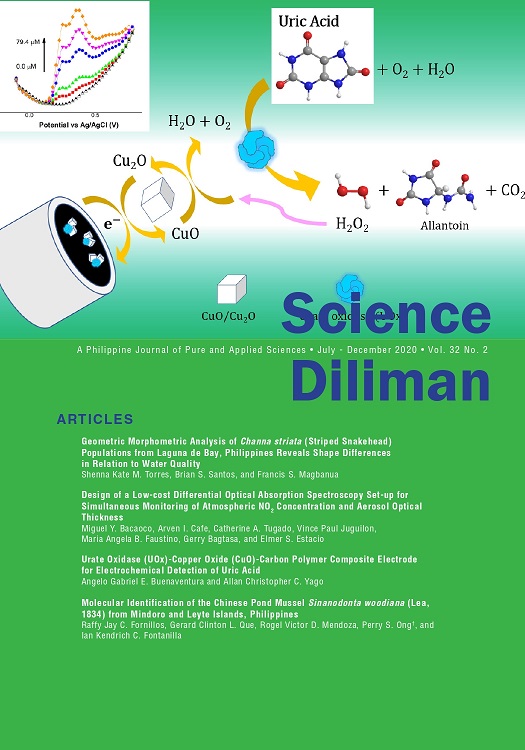Molecular Identification of the Chinese Pond Mussel Sinanodonta woodiana (Lea, 1834) from Mindoro and Leyte Islands, Philippines
Abstract
The Chinese pond mussel Sinanodonta woodiana (Lea, 1834) is a large freshwater bivalve species of the family Unionidae and a known invasive alien species. Proper verification of its identity as well as its source population is crucial for the control of its spread. However, its high plastic shell morphology that resembles other non-invasive species of unionids can be an obstacle. The distribution and ecological impact of this invasive unionid is not fully understood and should be further investigated to prevent further spread in the Philippines. In this study, we used the cytochrome oxidase I (cox1) gene to verify the identity of putative S. woodiana samples collected from Bato Creek in Oriental Mindoro and Lake Danao in Leyte, Philippines and elucidate their source populations. Eighteen cytochrome oxidase subunit 1 (cox1) barcodes were generated from samples collected from Lake Danao, Leyte (n=13) and Bato Creek, Oriental Mindoro (n=5). These barcodes were subjected to Basic Local Alignment Search Tool (BLAST) analysis, which showed that the cox1 sequences from the Philippine samples matched with those of S. woodiana (>94%) found in GenBank. The sequences were then aligned with cox1 sequences of S. woodiana and other unionid representatives from GenBank. Phylogenetic and haplotype network analyses also showed three haplotypes (Hap 1, 2, and 4) of S. woodiana samples from Lake Danao and Bato Creek. Hap 1 and 2 are distinct haplotypes observed in Lake Danao samples while Hap 4 is shared between Lake Danao and Bato Creek samples and have clustered with conspecific specimens from Malaysia and Indonesia, suggesting their potential Island Southeast Asian origin.



